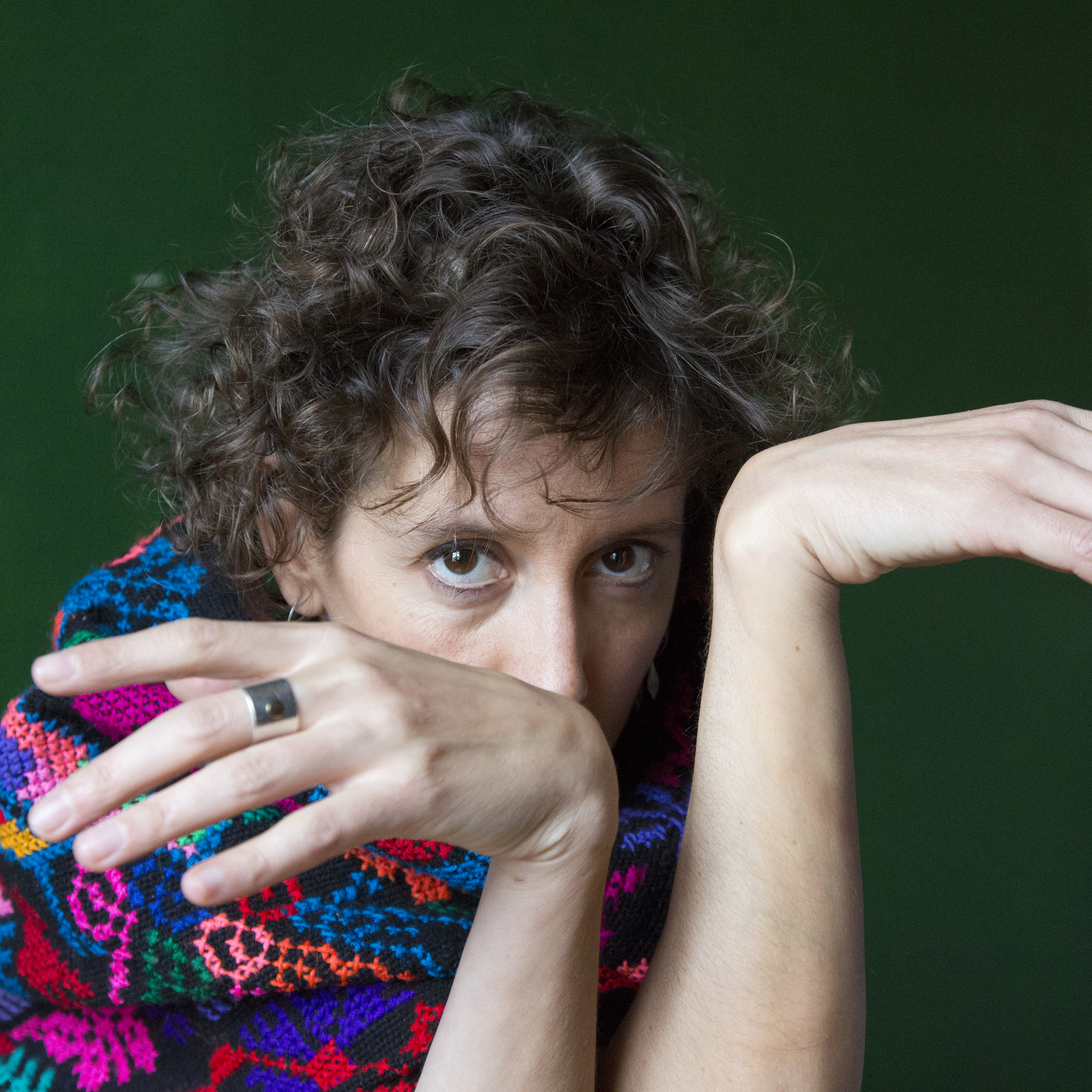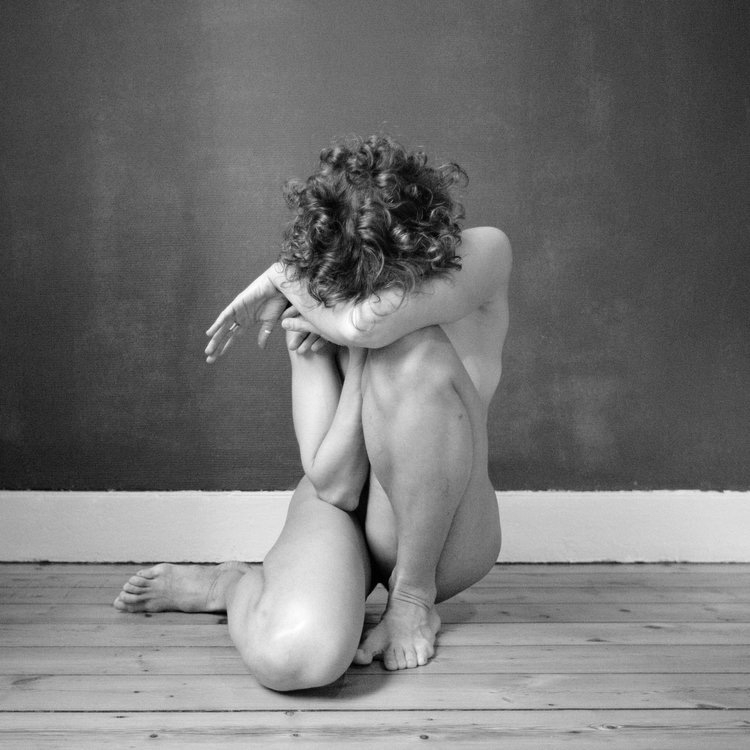Words by Paula Riofrio.
Scenic art’s dramaturgy brings words and ideas to the flesh and bone, takes the thoughts into a practice that vests through enactment. It webs relationships as a rhizome among concepts, objects, individuals, actors, cultures, creators, locations, and goes beyond linguistics. It is time and intensity, suspension and tension, is a way to reveal the invisible, the reason to express the ineffable, it is will, a catalyst.
The following article will look at dramaturgy in relation to the creation of dance theatre, having dance maker Laura Aris as interlocutor.
The Piece
In November 2018, Laura Aris, along with the National Dance Company of Ecuador premiered the show, LÃnea y contorno de un abismo (LCA), at the Festival Internacional de Artes Vivas Loja, in the BenjamÃn Carrión Theatre. The show was based on several short stories and two novels written by Pablo Palacio, Ecuadorian surrealist avant garde writer born in Loja in 1906. Palacios’ literature has been described as labyrinthine, oneric, nightmarish and populated by outsider characters. His narrative tends to be fragmentary and absurd, yet rooted in an absorbing complex reality that makes itself heard and felt through his lines.
Vida de el ahorcado (1931) and Débora (1927), the novels used as the structure skeleton for Aris’ piece, are both conceived by fragmented chapters presented as a diary. Vida del ahorcado, one of the key components for the work is compounded by merging scenes that narrate the life and death of Andrés Farinango, the main character of the book, whose life was mirrored with Palacio’s on stage.
“Poetic musings above the stage, and in the middle, and to the front, to the side and on the left, characters that tell a fragmented story!” That is how Palacio would have described the stage, followed by: “Come! Enter thee! Come see things and things!” Even though Aris claimed that “dramaturgy did not exist as a central element in the show, it only arranges what has been read, spoken, but it is far from defining what happened” there are seven main concepts that tread the dramaturgy in both the literature text and the dance theatre play: justice, desire, death, loss, love, isolation and public opinion.
The concepts, in order to be displaced inside scenic and performatic work, materialise into:
- The dramaturgy of movement, a correspondence between actions, dance and bodily immersion into the space.
- The dramaturgy of the object, which refers to how an object enters the scene and how it leaves.
- The dramaturgy of colour; how a colour manages to give information at both conscious and unconscious levels, conducting the audience to receive as well as to feel certain emotions.
- Finally, the dramaturgy of the sound, which is highly conceived in this play: the instruments were rocks, bones, human voices and the thick, dark, and lyrical fingering of the cello player, which represented Palacios’ alterego.
- All together, these constituents set a sensible context that transformed the perception of the audience into an unspoken conversation.
The artist, the dramaturg
“Mi escuela como dramaturga empieza realmente con la práctica, con la realidad.”
“My school started with the practice, with the reality”
Laura Aris started within corporeal practices as a dancer/interpreter and graduated at a very young age; started her professional living arts practices in many companies in Spain, her native country, and shortly after moved to Brussels at the age of 21. It was during the collaborative and interpretative experiences in Brussels that she absorbed knowledge within the many structures and games that scenic arts engage. She was part of the new wave of performers that did not ensemble into dictated pre-shaped movements, but the wave of performers as creators; the ones that nurtured from readings, films, debates and conversations. She funnily mentioned “…the school started after the school. No, it only continued.” She was grateful and conscious of how her ways of knowing dramaturgy and dance making fluidly arrived from practical experiences in her daily work.
The observation and embodiment of dance theatre processes she experienced as an interpreter left in her mind and body streams of creative information to develop herself as a director and dramaturg on her later career. After leaving her work inside the companies as an interpreter, she created her own solos and started taking many residencies abroad, enhancing her dramaturgical, directive skills, or as she describes it, learning in action how to become an “orchestra director” as asserted by Aris.

LÃnea y contorno de un abismo was a little different. As one of her first big scale productions, it had a different creative process, therefore new dramaturgical approaches. Laura was on a commission to make a three-month montage into one. For this purpose, she used two of the residencies she was called on: one in Germany and one in Canada, to help her put the ideas into bodies and motion.
In Canada she worked on a two week creative process workshop to realise whether the main ideas worked or not on a collective and individual groups of bodies. The result of it was a written script with a clear storyline; the life and death of Pablo Palacio through his literary world while meeting his fictional characters, walking among them. Working with this context meant the edge and contour of the abyss was already drawn on its rounded circled way. Now, it was all about resolving intentions and meeting the ideas with the action: generate the dramaturgy with the dancers.
Both the cast and Laura Aris had to embrace a deep knowledge of the literary work of Palacio, which gave them a clear imagining of the fictional world they were getting into. As most of the people that had read Palacio back to front; Aris mentions how his words, Palacio’s, did not only stay with her inside the studio but accompanied her on a daily basis; “estaba Pabloloquita” she jokes, which I can only translate as “I was madden by Palacio”. This event led to a personal yet suitable decision: the text, the actual lines from Palacios’ narrative will be displayed in certain scenes, transformed into a scenic object.
“…la creación es un acto de coraje.”
“ …creating is an act of courage.”
Aris described her dramaturgy as eclectic and playfully chaotic. The works she has made were guided by intuition, ideas and hours in the studio. Those ideas, she mentions, were threading a web: “it is like dancing, dancing is not only a sequence, it is a texture, a rhythm, a tension, an individuality, a character, the steps are an excuse,” Aris mentions.
Her main influences are Pina Bauch, Alain Platel and German theatre, which has made her look for a correspondence between ideas and the scene’s content in a performance. Every scenic work creates its own rules and logic, even when there is no particular methodology. One of the questions she often asks to construct dramaturgy is how these elements, ideas and content, are constructed and performed? As a dance theatre maker, Aris needs to find excuses to move, bestow meaning to the movement and bestow movement to the meaning; all actions become part of the dance and it all works as dramaturgy. There is not a line, or a structure at first, but day by day, mobilising questions, intuition, images and sensations breed the dances in the studio and preserve themselves into a notebook.
As a conclusion
Rhythm, intention and action play an important role so as to maintain dramatic tension. Action and movement must be filled by a necessity, otherwise they are just shapes and well executed choreographies, not a sentient trace of life, not living art at all. Aris clarifies this relationship between interpreters, directors, all artistic teams and this living creature; a relationship based on openness and availability, completely alienated from the results and rather oriented on a quest of perception over the piece’s logic. But it is not all about listening; the dramaturg or director would also propose norms, restraints and mobilising questions to solve, in order to generate new material. As a collaborative work, both creative interpreters and director decide or rather create the way to know when to stop an action and find out how to go into the next one. Aris adds “…sometimes, hold the focus on an action, others raise up the intensity, or give the performers a game to play so they centre their attention on it, solving the action, …” It is playing the game, trying to win.
The fluidity or the contrasts of words; a wall, any wall; any element, ether, land or sea, all can be dramaturgy detonators. It seems easy, but we have looked to the ways of ‘working dramaturgy’. What about when it does not work? Simon Bayly in his essay ‘Unworking dramaturgy’ firstly describes his context and ways of working in experimental theatre, then briefly summarises a chapter in the UK’s 1992 politics related to Thatcher and John Major “…when the inner logic of a theatrical – or political – sequence didn’t follow a logic we could recognise, a logic that wasn’t part of the plan, even if the plan was no to have a plan.” (Bayly, 2017: 170) He uses that piece of history as a metaphor, opening doors to approach life itself. One approaches dramaturgy wondering “How an action ought to imply and lead forward into the action that followed it and necessarily arose from the one before.” (Bayly, 2017: 170) The answer, there is no answer, straight questioning, mobilising, questioning, alienating from the answer and simply living the question, suffering the question. Allowing yourself to be guided by curiosity rather than stopped by an unwelcome acknowledgement or by any unsettling aspect. Let yourself be reminded that it is not a matter of speed, it is a matter of resistance; and if lost just close your eyes for a second and think of Beckett, then repeat out loud and to yourself “I must go on. So I’ll go on. Air, air, I’ll seek air, air in time, the air of time, and in space, in my head, that’s how I’ll go on.” (Beckett, 1915: 379)
